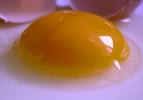 With snow creating blizzard conditions and the Interstate closed, Manhattanites may be tempted to stay at home and curl up with some festive egg nog.
With snow creating blizzard conditions and the Interstate closed, Manhattanites may be tempted to stay at home and curl up with some festive egg nog.
And every year, the same question comes up: is it safe to use raw eggs to make homemade egg nog?
Sort of?
Egg nog is a festive beverage generally prepared during the holiday season for family and holiday celebrations. According to the Oxford English Dictionary, it is a drink in which the white and yolk of eggs are stirred up with hot beer, wine, or spirits. A number of recipes can be found on the Internet, including http://www.eggnogrecipe.net/.
Egg nog is traditionally prepared with raw egg yolks and whites. In the 1998 Salmonella Enteritidis Risk Assessment for Shell Eggs and Egg Products, the U.S. Department of Agriculture estimated that 1-in-20,000 shell eggs is contaminated with Salmonella.
 The folks at the Egg Safety Center estimate that the odds of any one person in the US getting sick from SE in eggs is 1 in 2,240 or 0.045% each year. Unless egg nog is your primary, year-round source of eggs, the risk estimate for the seasonal beverage would be smaller.
The folks at the Egg Safety Center estimate that the odds of any one person in the US getting sick from SE in eggs is 1 in 2,240 or 0.045% each year. Unless egg nog is your primary, year-round source of eggs, the risk estimate for the seasonal beverage would be smaller.
Many egg nog recipes call for alcohol whether it be beer, wine, or spirits, and many believe that the alcohol in the drink kills harmful bacteria, including salmonella. The Extension Service at the University of Minnesota says there is no scientific data to supports this claim. “Alcohol inhibits bacterial growth but cannot be relied upon to kill bacteria.” Consequently, adding more alcohol to a recipe may increase its potency, but it will not ensure the destruction of all bacteria.
Pasteurized eggs or store-bought egg nog are microbiologically safer alternatives.
 Me? Too much fat in egg nog.
Me? Too much fat in egg nog.
Here are three recipes from Sunday’s N.Y. Times.
1958: Eggnog
This recipe appeared in The Times in an article by Craig Claiborne.
As Freeman pointed out, “It’s important to get good farm-fresh eggs, with really orange yolks and really thick cream; these are the main constituents of the drink.” Halve the recipe for a smaller gathering.
12 eggs, separated
1 cup granulated sugar
1 cup bourbon
1 cup Cognac
1/2 teaspoon salt
3 pints heavy cream
Grated nutmeg
1 to 2 cups milk (optional)
1. In an electric mixer, beat the egg yolks with the sugar until thick.
2. Slowly add the bourbon and Cognac while beating at slow speed. Chill for several hours.
3. Add the salt to the egg whites. Beat until almost stiff.
4. Whip the cream until stiff.
5. Fold the whipped cream into the yolk mixture, then fold in the beaten egg whites. Chill 1 hour.
6. When ready to serve, sprinkle the top with freshly grated nutmeg. Serve in punch cups with a spoon.
7. If desired, add 1 to 2 cups of milk to the yolk mixture for a thinner eggnog. Makes about 40 punch-cup servings.
——
2007: Roquefort-and-Pear Eggnog
By Eben Freeman, the head bartender at Tailor in SoHo.
3 ounces Roquefort cheese, crumbled
1 1/2+cups heavy cream
4 eggs, separated
1 tablespoon sugar
1/4 cup poire William, or other pear brandy
1/2 teaspoon kosher salt.
1. One to two days before making the eggnog, combine the cheese and cream in a container and refrigerate for 36 to 48 hours.
2. In a mixer fitted with a whisk, combine the egg yolks, sugar and poire William. Beat until pale yellow and emulsified. Chill for 2 hours. Line a sieve with cheesecloth, and strain the cream-and-cheese mixture.
3. Whip the cream to stiff peaks, then fold into the egg-yolk mixture. Beat the egg whites until fluffy, then add the salt and continue beating to stiff peaks. Fold into the cream mixture. Chill for 1 hour. Serve in small cups with a spoon. Serves 10.
——
2007: Cedar-Scented Eggnog
By Eben Freeman, head bartender at Tailor in SoHo.
1 cedar plank or 1 sheet of cedar paper, for wrapping food
1/4 cup bourbon
4 eggs, separated
1/4 cup sugar
1/4 cup Cognac
1 1/2 cups heavy cream
Pinch salt.
1. Two days before making the eggnog, infuse the bourbon. Preheat the oven to 350 degrees. Using a vegetable peeler, shave strips of cedar from the cedar plank until you have 1/4 cup of shavings (if using cedar paper, break it into pieces). Spread the shavings on a baking sheet and bake in the oven until toasted, about 20 minutes. Let cool, then combine with the bourbon, cover and let sit for 48 hours.
2. Strain the bourbon through a jelly bag or a tea towel. In a mixer fitted with a whisk, beat the egg yolks and sugar until pale and fluffy, then with the mixer on low, slowly add the bourbon and the Cognac. Chill for 2 hours.
3. Whip the cream to stiff peaks and fold into the yolk mixture. Beat the egg whites and salt to stiff peaks and fold into the same mixture. Chill for 1 hour. Serve in small cups, with a spoon. Serves 10.
.jpg) The Food Standards Agency (FSA) said a total of 14 clusters in England and Wales have been linked to a number of different catering establishments and one care home.
The Food Standards Agency (FSA) said a total of 14 clusters in England and Wales have been linked to a number of different catering establishments and one care home.
 Five outbreaks have been linked to oriental restaurants, three to other restaurants and one was in a care home.
Five outbreaks have been linked to oriental restaurants, three to other restaurants and one was in a care home. My friend John the carpenter who fought in WW II (last name Kierkegaard, like the philosopher, Soren, baby Sorenne, get it?) would also have his morning, noon and afternoon beers in Ontario, but would at least admit, “The work, after some beers, it’s not so great when looked at the next day.”
My friend John the carpenter who fought in WW II (last name Kierkegaard, like the philosopher, Soren, baby Sorenne, get it?) would also have his morning, noon and afternoon beers in Ontario, but would at least admit, “The work, after some beers, it’s not so great when looked at the next day.”.jpg) So when Susan Reef, president of
So when Susan Reef, president of  Yesterday on Days of Our Lives, Kate tried to poison Daniel and Chloe with an undetectable substance that she put on a tray of deviled eggs. When she caught her son, Lucas, trying to snatch an egg, she freaked out.
Yesterday on Days of Our Lives, Kate tried to poison Daniel and Chloe with an undetectable substance that she put on a tray of deviled eggs. When she caught her son, Lucas, trying to snatch an egg, she freaked out. 
 underpinning their upscale care. Maybe they were trained by the same folks who think it’s OK to serve cold cuts to old folks in Canada –
underpinning their upscale care. Maybe they were trained by the same folks who think it’s OK to serve cold cuts to old folks in Canada –  He believes the discovery is a world first and has handed the egg shell over to health authorities who will look for the presence of bacteria in the yolk and try to work out how the gecko got into the egg.
He believes the discovery is a world first and has handed the egg shell over to health authorities who will look for the presence of bacteria in the yolk and try to work out how the gecko got into the egg.
 The New South Wales Food Authority says that a group of 35 people fell ill, probably from salmonella, after eating homemade fried ice cream with a coating made of raw egg batter at a party. There were also 11 cases from another gathering where raw egg was used in caesar salad dressing and chocolate mousse. Three children also became ill after drinking affected egg nog
The New South Wales Food Authority says that a group of 35 people fell ill, probably from salmonella, after eating homemade fried ice cream with a coating made of raw egg batter at a party. There were also 11 cases from another gathering where raw egg was used in caesar salad dressing and chocolate mousse. Three children also became ill after drinking affected egg nog With snow creating blizzard conditions and the Interstate closed, Manhattanites may be tempted to stay at home and curl up with some festive egg nog.
With snow creating blizzard conditions and the Interstate closed, Manhattanites may be tempted to stay at home and curl up with some festive egg nog. The folks at the
The folks at the  Me? Too much fat in egg nog.
Me? Too much fat in egg nog. Something called
Something called